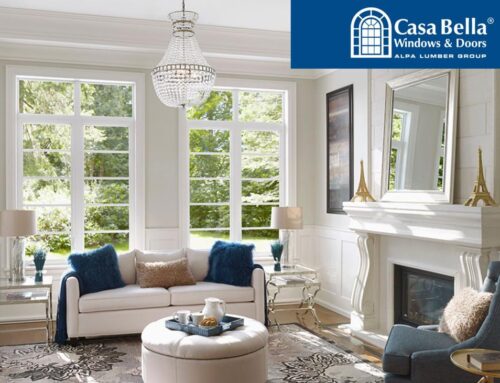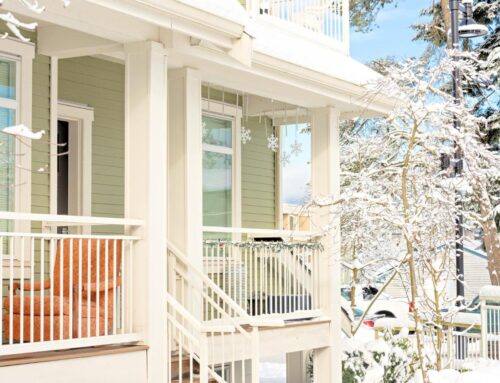Before the snowflakes start to fall, homeowners should inspect their windows to see if any outdoor air is leaking through. You can test this by holding a lit stick of incense in front of the closed window — if the smoke pushes away from the glass, there are drafts coming in. You need to address the problem and winterize the windows right away before the temperatures plummet.
Caulking:
To winterize your home, you should caulk windows from the exterior where the frame and siding meet — this will seal the warm air inside and block any of the freezing winds from creeping into the rooms. It’s possible that you applied caulk a year or so before, but the substance will have dried and become inefficient since then. You should scrape the old layer off with a putty knife, clean the area and apply a new bead of caulk. To make the results look professional, use a popsicle stick to smooth it down and create a neat white line.
Weatherstripping:
Caulking is meant to winterize drafty windows against the cold coming in from the outside of the house — weatherstripping is designed to give their defenses a boost from the inside of it. It can also be used to improve the thermal retention of other entrances like glass sliding doors and garden doors. There are different types of weatherstripping that residents can apply to the sashes like adhesive-backed foam, felt or spring V-seal. Specific materials work best with certain window styles like felt being used for casement and horizontal slider windows.
Energy Efficient Replacements:
If you want to guarantee that the winter weather doesn’t make its way into your living room, you should get rid of old windows and get upgrades installed as soon as possible. Get custom windows with energy-efficient features like low emissivity coatings and Warm Edge spacers — these are built to strengthen the thermal performance of the windows and to limit the over-consumption of heating resources. Low-emissivity coatings on windows shrink down radiant infrared energy, meaning light can easily pass in and out and heat cannot go out. Warm Edge Spacer and Super Spacer technologies are placed between the panes, creating powerful barriers to prevent heat loss. The final factor that makes windows and doors more energy efficient are professional installations. A contractor that does a rushed or inadequate job will taint the fantastic thermal qualities of the replacements. If you are planning to get upgrades before the winter, you should call us to learn more about our team of trained professionals and how to set up an installation date.
You can find a number of window replacement options with these essential features included in their designs in a variety of different shapes and styles like casement, awning, horizontal slider and simulated single-hung. It’s possible to get the same types of energy efficient window benefits with glass doors — you can get a new sliding patio door or a new set of garden doors that will protect against drafts, frost and condensation.
Curtains:
A lot of winterizing advice involves putting unattractive covers over window surfaces — people will suggest sticking saranwrap, bubble wrap, screens and even strips of newspaper to the glass. One of the convenient energy efficient hacks that homeowners won’t be embarrassed about is to use sets of thick fabric curtains to guard against the winter cold at night and to open them up after the sun rises. In the morning, the clear windows will allow the rooms to fill up with passive solar heat and natural light.
Windows are popular entry points for the cold outside air and convenient escape routes for warm indoor air. If you want the house to be comfortable for the entire winter season, you should take a moment to assess your windows. Your family will be thankful that you had the foresight to give them extra insulation when the ground is covered with ice and snow.




